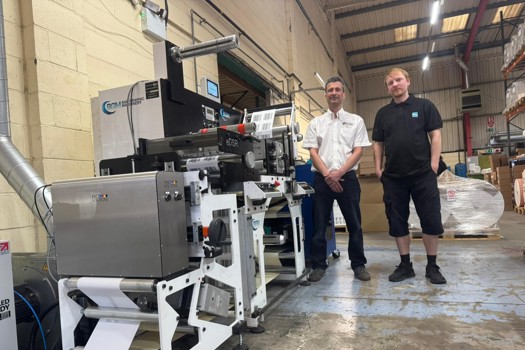Targeted at high-volume printers using multiple binding lines, as its name implies, the machine was capable of trimming three sides of a book block at the same time. According to Greg Bird, sales manager for Kolbus UK, the HD 150 was the first machine of its type to feature scoring knives.
"Scoring the product before being trimmed prevented nipping of the covers," explains Bird.
Dual versions
Today, there are two versions of the machine: the 150.B and the HD 153.P. Introduced in 1998, the 150.B was an entry-level, simplified version of the trimmer. This was followed by the introduction of the 1503P at Ipex 2006. The 'P' stood for programmable, with the model fitted with Copilot and featuring a central adjustment console.
Faced with stiff competition from Muller Martini models, Kolbus focused its attention on developing the way books were handled on the machine from the in-feed to the delivery.
To this end, the machine picks up and carries the book, ensuring there is no dragging on the belts and, therefore, avoiding marks and scuffs. Once at the trimming station, sidelays support the spine and hold it firmly in position, preventing chipping or tearing.
The machine can achieve simultaneous trimming of multiple copies up to 80mm thick. The 153.P can also be linked to other controls for printers running more than one three-knife trimmer for two-up book production.
The trimmer can take pre-set information from an MIS or from the bindery, which, according to the company, speeds up makereadies and means printers don't have to replicate information on the trimmer.
Meanwhile, the in-feed can feed continually into a pile, or you can have a counter stacker operation where the machine will count three books and then feed, rather than just feeding from the bottom.
Since it launched, Kolbus has sold more than 700 of the 150 range worldwide. The manufacturer does not sell used machinery direct, but will happily part-exchange old models. Kolbus has eight engineers in the UK and is supported by an additional team of engineers at its headquarters in Germany. Service contracts are bespoke and tailored to each customer.
When looking for a used machine, check the number of cycles and the number of books the machine has produced. Also make sure the machine has been well-maintained.
Used models that are five years old will usually command 50% of the new price.
Specifications
Max size 310x400x80mm
Max stack height 80mm
Speed Up to 6,000 cuts per hour
Max front off-cut width 40mm
Max head and tail off-cut width 50mm
Footprint 2.5x4.2m
Weight 5.2 tonnes
Price New: £185,000, five-year-old used model: £92,500
What to look for
- Wear and tear
- Number of cycles and products










